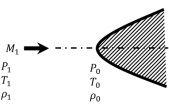What is the diploid number of cell
Show work and explain answers
Q1:
In rats, several independently assorting autosomal genes affect coat color. Gene A controls the distribution of yellow pigment in hair, and gene B causes black pigmentation. The two genes interact as follows: A-B- (gray), A-bb (yellow), aaB- (black), and aabb (cream). These genotypes are only expressed in the presence of the dominant allele of a third gene, C; rats with genotype cc are albino.
a. Deduce the genotype of the albino mice, to the extent that is possible, in the following table. Explain your answers.
|
True-breeding parents |
F1 |
F2 offspring |
|
Gray x albino |
All gray |
9/16 gray : 3/16 yellow : 4/16 albino |
b. Deduce the genotype and phenotype of each parent in the following table. Explain your answers.
|
Cross |
Numbers of offspring |
|
Parent A x Parent B |
135 gray, 83 albino, 47 yellow, 44 black, 16 cream |
c. A gray-colored rat is mated with one that is yellow. The offspring include an albino rat and a cream-colored rat. Diagram this cross. Be sure to include the Punnett square and the phenotypic ratio in the offspring.
Q2:
In humans, hemophilia A is an X-linked recessive trait characterized by an abnormality in blood clotting. Albinism is an autosomal recessive trait characterized by the absence of pigment in the skin. A man and woman, both with normal skin pigmentation, have two daughters: one is albino and the other hemophilic. The maternal grandfather had normal blood clotting. The couple plan to have another child. What is the probability that their next child will be:
a. a son that is normal for both skin pigmentation and blood clotting?
b. a daughter that is albino and hemophilic?
c. a child that is a carrier for both traits?
Q3:
Homer, who is affected with a particular disease, is married to Marge, a phenotypically normal woman. They have ten children: 6 normal boys and 4 girls with the disease. Characterize each of the following modes of inheritance as: impossible (I), unlikely (U), probable (P). Justify your answers.
a. Autosomal dominant
b. Autosomal recessive
c. Y linked
d. X-linked dominant
e. X-linked recessive
Q4:
Consider the following diagram which depicts a particular anaphase of cell division.

Assume that in this type of cell there is NO crossing-over!
Can you tell for sure whether this is anaphase of mitosis, or anaphase I of meiosis, or anaphase II of meiosis?
If so, what is the diploid number of this cell?
Q5:
Consider a diploid organism that has three pairs of chromosomes. Assuming no crossing-over occurs, what proportion of gametes would be expected to …
a. …contain chromosomes of maternal origin only?
b. … contain some chromosomes from both paternal and maternal origin?
Q6:
Consider the two X-linked genes, z and w, in Drosophila. The two loci are 30 cM apart and each segregates a dominant allele (z+, w+) and a recessive allele (z, w). For each of the following crosses, predict the offspring’s phenotypic frequencies by sex?
a. Heterozygous female in cis configuration x hemizygous z+w male.
b. Heterozygous female in trans configuration x hemizygous zw male.
